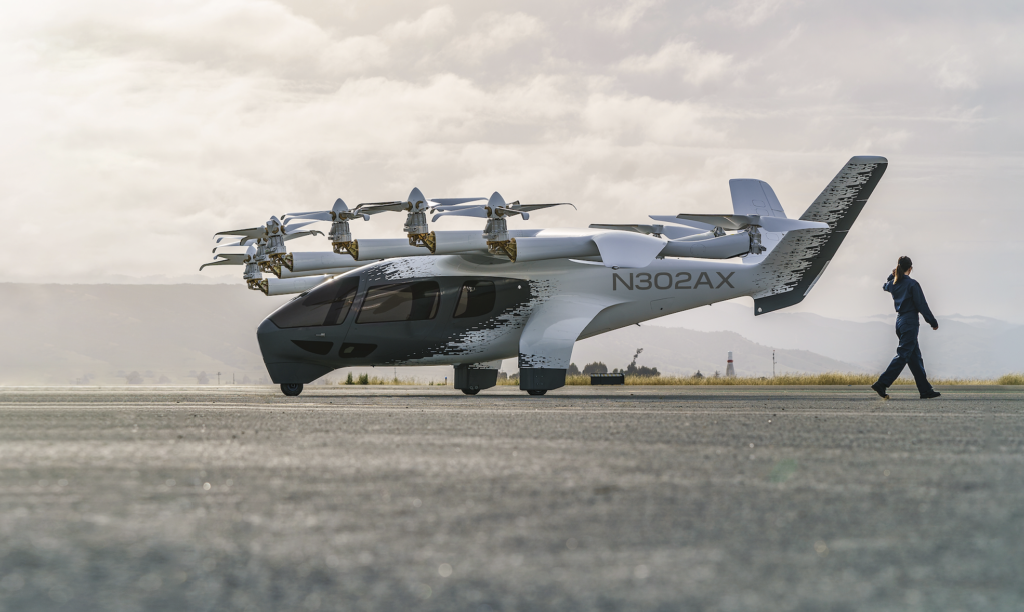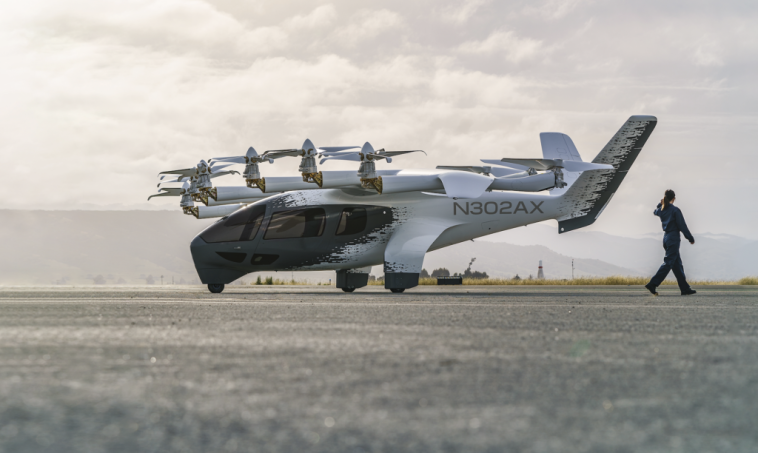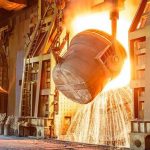
Joby and L3Harris: A Bold Step for Hybrid VTOL in Defense
The aerospace realm is experiencing an electrifying phase as industry giants join forces to redefine the future of aviation. Joby Aviation, an electric air taxi pioneer, and L3Harris Technologies, a storied defense contractor, are now collaborating to develop a hybrid vertical take-off and landing (VTOL) aircraft with military capabilities. This noteworthy venture reflects not only ingenuity in design but also a blend of commercial know-how and defense readiness that promises to drive future production lines and operational deployments. In this opinion editorial, we take a closer look at the subtle parts of this ambition, the tricky bits of integrating new technology into defense strategies, and the overall impact on both defense and manufacturing sectors.
As military need continues to evolve, the merging of technologies crafted for civilian markets with military-specific innovations inspires both caution and excitement. With developments like Joby’s gas-powered hybrid powertrain for its S4 aircraft platform, the next-generation military VTOL aircraft stands to offer unprecedented versatility for low-altitude operations, whether piloted by a crew or operated autonomously. The coming months will be critical as prototypes undergo flight testing and demonstrations in government exercises, signaling a substantial shift in how the defense sector leverages emerging technologies.
Defining Hybrid VTOL Military Aircraft
At its core, the hybrid VTOL aircraft project answers a clear call for multi-mission capability in defense applications. Imagine a system designed for a seamless blend of precision, reliability, and adaptability. This initiative essentially takes a successful commercial model and pushes it into the realm of defense without compromising on efficiency.
Some key features of this next-generation aircraft include:
- Capability for both crewed and autonomous operations
- Gas-powered VTOL design optimized for low-altitude missions
- Integration of surveillance and weapon platforms, such as sensors, effectors, and communications equipment
- Potential for extended mission range and rapid refueling capabilities
These subtle parts of the design process—integrating a hybrid powertrain while maintaining the aviation platform’s agility—illustrate the intricate balance engineers must strike. While some of the pieces may seem intimidating, the evolution in hybrid powertrain technology has already shown promise in reducing carbon footprints while ensuring operational endurance.
Combining Commercial Ingenuity with Defense Expertise
The real beauty of the Joby-L3Harris collaboration lies in its combination of commercial efficiency and defense-specific adaptations. Joby Aviation has rapidly scaled production in facilities across California and Ohio, demonstrating a capacity to meet increased demand even in a high-stakes industry. L3Harris, with its longstanding role in developing and deploying mission-specific surveillance and weapon systems, brings the much-needed tactical insight that transforms a simple air taxi into a dual-use platform.
This union is more than a technological arrangement; it is a strategic move that mirrors the broader trend of leveraging commercial successes to bolster national defense. Recent efforts by the U.S. Department of Defense to work with companies like Joby through its Defense Innovation Unit underscore how these partnerships shape modern aerospace endeavors.
Strategies for Overcoming the Tricky Parts of Advanced VTOL Development
Every revolutionary project is accompanied by its own set of twisted issues and complicated pieces. The journey toward a state-of-the-art hybrid VTOL aircraft is no different. Teams must manage your way through a series of challenges that include everything from regulatory compliance to manufacturing scale-up. Here are some considerations that highlight the practical aspects of this development:
- Technical Integration: Merging gas-powered propulsion with electric systems involves careful coordination, especially when ensuring that each component meets the necessary safety standards.
- Certification and Compliance: Making your way through the regulatory landscape can be nerve-racking. Both civilian and military certification processes require meticulous documentation and demonstration of safety and efficacy.
- Production Scale-Up: The production of these advanced VTOL designs must overcome head-scratching issues such as supply chain management, quality control, and workforce training.
- Cost Management: Budget constraints can lead to further challenges. Balancing innovation with cost efficiency is a seesaw act that requires regular recalibration as development proceeds.
While the road ahead may be full of problems, each challenge also serves as an opportunity for breakthrough innovations. The collaboration is already showing early signs of success, with flight tests planned to begin in the fall and demonstrations expected during government exercises in 2026. These milestones serve as tangible evidence that, step by step, this project will overcome even the most intimidating hurdles.
Technological Advancements: A Look Under the Hood of Hybrid VTOL Solutions
When it comes to technological innovation in aviation, understanding the fine points and hidden complexities behind new designs is essential. The hybrid VTOL aircraft being crafted by Joby and L3Harris is shaped by a series of groundbreaking advancements. Below is an organized table that sheds light on the primary technical components and their intended impact:
| Component | Feature | Impact |
|---|---|---|
| Hybrid Powertrain | Combination of gas and electric propulsion | Improved fuel efficiency with extended operational range |
| Vertical Take-Off and Landing System | Advanced lift and transition technologies | Enhanced maneuverability for low-altitude missions and difficult terrains |
| Autonomous Flight Systems | Incorporation of Joby’s recent software acquisitions | Reduces dependency on human pilots and sharpens logistics |
| Surveillance and Weapons Integration | L3Harris-developed sensors and effectors | Provides mission-specific capabilities, from reconnaissance to armed response |
By taking a closer look at these components, we can appreciate how each element contributes to an overall system that is not only cutting-edge but also designed to deliver both commercial and military value. The subtle details in this integration process echo the fine shades that differentiate a satisfactory design from a truly groundbreaking one.
Shifting Market Dynamics: The Impact on Defense and Commercial Aviation
The implications of this hybrid VTOL development spread far beyond the immediate collaboration between Joby and L3Harris. They touch upon broader economic trends and reshape the competitive landscape of both the defense and commercial aviation sectors. Let’s multiple key points signal why this matter is super important:
- Market Expansion: As commercial ventures increasingly cross over into military applications, companies are presented with new revenue streams linked to defense contracts and government partnerships.
- Enhanced Operational Efficiency: With the integration of autonomous flight and hybrid power systems, the future VTOL aircraft may significantly cut operational costs and reduce the burden of intense logistical challenges in military operations.
- Job Creation and Economic Growth: Scaling production at manufacturing facilities in California and Ohio is poised to generate a host of job opportunities while stimulating local economies and encouraging further industrial innovation.
- Strengthened National Security: As America seeks to rely less on foreign military tech, domestic innovations like the hybrid VTOL project become even more critical in ensuring preparedness and advanced defense capabilities.
Indeed, the ripple effects of this initiative are expected to serve as a blueprint for other industries looking to work through ambiguous regulatory landscapes, tackle production scaling, and find a path that combines both commercial success and robust defense applications. The timely integration of commercial technology into military operations is addressing many of the little twists that once kept these sectors disconnected.
Integrating Artificial Intelligence in Manufacturing Processes
While the spotlight is on the hybrid VTOL itself, another equally exciting trend is the growing use of artificial intelligence (AI) in manufacturing environments. AI is being employed to tackle tricky parts and simplifying the tangled issues that come with mass production—a trend that is just as relevant to industrial manufacturing today.
Manufacturers are increasingly adopting AI for the following key purposes:
- Predictive Maintenance: AI systems can diagnose and predict equipment failures, ensuring that production lines remain efficient and uninterrupted.
- Quality Assurance: Advanced visual inspection systems and machine learning algorithms work together to detect fine shades and subtle details that human eyes might miss, ensuring that each part meets strict tolerances.
- Supply Chain Optimization: With AI-driven analytics, companies can figure a path through messy supply chains, predicting demand fluctuations and identifying bottlenecks before they grow into significant issues.
- Customization and Flexibility: AI makes it possible for manufacturers to adapt their processes in real time, tailoring production methods based on new designs or unexpected challenges in the field.
This technological adoption promises to revolutionize not just how products like hybrid VTOLs are built, but also how entire production ecosystems operate. In turn, such efficiencies help lower costs, reduce waste, and promote sustainable practices—benefits that are super important in an era where economic stability and environmental concerns go hand in hand.
Regulatory and Economic Implications in the VTOL Market
Steering through the regulatory maze remains one of the more challenging aspects of this development. With both commercial and defense markets in focus, companies must figure a path that satisfies an array of regulatory requirements while still pushing the boundaries of technology.
Here are some key points on the regulatory and economic landscape:
- Regulatory Oversight: Aircraft development for both non-military and military applications is subject to stringent review processes. The dual-use nature of the hybrid VTOL aircraft means that manufacturers must comply with guidelines set by bodies like the FAA and defense agencies, all while incorporating rapidly evolving technologies.
-
Economic Incentives and Challenges:
- Government contracts, such as those previously awarded to Joby through AFWERX Agility Prime, offer significant financial incentives that can spur large-scale production.
- On the flip side, companies must manage the nerve-racking balance of high research and development costs alongside tight profit margins.
-
Market Volatility and Competition:
- Other electric VTOL makers, like Archer Aviation, are also partnering with defense contractors. This suggests that the market is brimming with competition, making it essential for each player to continuously innovate.
- Defense spending fluctuations can also mean that contracts are subject to sudden changes in policy, which companies need to brace for.
Overall, while the current economic environment and regulatory framework might seem intimidating, they also pave the way for new strategies and opportunities. With proper management and strategic planning, these challenges can be transformed into stepping stones rather than stumbling blocks.
Production Scale-Up and Strategic Partnership Dynamics
The ongoing surge in production efforts at Joby’s facilities in California and Ohio is a clear indicator of the company’s commitment to scaling operations. As production volumes increase, industries face their own set of tangled issues, from workforce training to supply chain logistics. However, by focusing on key areas and employing robust strategic partnerships, these hurdles can be overcome.
Consider the following factors that are instrumental in managing production scale-up:
- Infrastructure Investments: Enhanced production lines, rigorous quality control systems, and advanced AI integration are central to streamlining output.
- Skilled Workforce Development: Training employees to handle advanced technology and complex manufacturing processes is super important for meeting rigorous standards.
- Supply Chain Coordination: Close collaboration with suppliers ensures that the production pipeline remains smooth, even when unexpected challenges crop up.
- Financial Backing and Government Support: Consistent government contracts and financial backing via defense initiatives help secure the necessary capital for large-scale production.
By taking the wheel in these areas, Joby and its partners can set a robust foundation for future growth. Moreover, such initiatives are likely to drive additional investment from both private and public sectors, strengthening the overall ecosystem in which advanced aerospace technologies are developed and deployed.
Long-Term Implications for the Defense and Automotive Sectors
The convergence of mobility solutions across different industry verticals is redefining strategic outlooks in both the defense and automotive sectors. The hybrid VTOL project not only exemplifies the move towards versatile, multi-use platforms in defense but also highlights a broader trend of integrating advanced propulsion systems across various mobility applications.
Some of the long-term implications include:
- Operational Versatility: The hybrid VTOL model offers a flexible platform that can be adapted to various mission requirements, from cargo relocation to surveillance operations. This adaptability is a game-changer for military strategists seeking to optimize resource allocation.
- Cross-Sector Influence: The technological breakthroughs in VTOL design are starting to influence other segments such as automotive electric vehicles. The principles of hybrid power management, autonomy, and rapid deployment have parallels that suggest a fluid cross-industry exchange of ideas.
- Economic Ripple Effects: Boosts in manufacturing capacity, combined with government-backed contracts, could spur a wave of job creation and technological investment across multiple sectors. Both the defense and automotive industries stand to benefit from such advancements.
- Sustainability Initiatives: Adoption of hybrid propulsion systems and fuel-efficient technology supports sustainability objectives by reducing carbon emissions and promoting greener alternatives.
While these shifts come with their own set of intimidating and sometimes overwhelming challenges, they also encourage industry players to work together in tackling production gaps, regulatory challenges, and market volatility. These long-term outcomes have the potential to reshape not only the military air mobility landscape but also set new standards in other sectors reliant on innovative high-tech solutions.
Industry Collaboration: The Bigger Picture of a Strategic Shift
The collaboration between Joby and L3Harris is more than just a business deal—it is a harbinger of a larger trend where industry collaboration fuels rapid innovation. Such partnerships combine cutting-edge technology, advanced manufacturing practices, and strategic government relationships to create compelling products that transcend their original market definitions.
Here are some observations regarding the benefits of cross-industry collaboration:
- Sharing Expertise: Conventional barriers between commercial innovation and military applications are being reevaluated. By pooling resources and skills, companies can better tackle the tricky parts of design, certification, and production scaling.
- Accelerated Innovation: When diverse teams work in tandem, the pace of innovation increases, leading to faster problem-solving and the robust integration of emerging technologies. This collaboration is a prime example of how strategic unions can bypass some of the off-putting delays typically associated with complex product development.
- Mutual Risk Mitigation: Shared financial and technological risks across multiple partners can help cushion setbacks, paving the way for a smoother path through potential industry turbulence. Sharing responsibilities can reduce the nerve-racking load on single organizations.
In essence, partnerships like these underscore the importance of both diversity in expertise and a willingness to venture into previously unexplored territories. They also set a precedent for future collaborations that may further accelerate the pace of technological change within the aviation, defense, and even automotive sectors.
Taking a Closer Look at Deployment and Future Demonstrations
What can we expect as the project moves forward? The planned flight testing this fall, combined with government-led demonstrations scheduled for 2026, will serve as key milestones for the hybrid VTOL initiative. These events are not just technical validations—they represent a moment of truth where innovation meets operational reality.
During these demonstrations, several critical aspects will be under scrutiny:
- Mission Reliability: Testing the aircraft under real-world scenarios will help determine its ability to handle unpredictable environments and pinpoint any lingering confusing bits or twisted issues in its design.
- Operational Adaptability: The aircraft’s capacity to switch between crewed and autonomous modes in response to diverse operational demands will be closely observed.
- System Integration: Ensuring that surveillance systems, weapon platforms, and communication systems can seamlessly interact is a key indicator of the aircraft’s overall reliability and effectiveness.
- Environmental and Tactical Performance: The aircraft’s environmental impact and tactical viability in various mission scenarios will not only inform design tweaks but also strengthen its case for large-scale adoption by military operators.
These upcoming tests and demonstrations will offer industry insiders a chance to see firsthand how effectively the project manages to work through the tangled issues that often accompany innovative engineering solutions. They will also serve as a benchmark for future technology transfers from commercial platforms to militarized counterparts.
Final Thoughts: Balancing Innovation and Practicality in Aviation
The journey to create a versatile, robust hybrid VTOL aircraft is one marked by ambition, technological brilliance, and the willingness to take calculated risks. The collaboration between Joby Aviation and L3Harris Technologies encapsulates a moment where private sector innovation converges with defense imperatives to form a new chapter in aerospace development.
As we take a closer look at the progression from prototype to production, several key takeaways emerge:
- The marriage of commercial agility with defense-grade reliability opens up fresh avenues for collaboration—and innovation—in highly regulated industries.
- Despite the nerve-racking challenges involved, addressing each tricky part and tangled issue in the design phase significantly paves the way for future successes, both operationally and economically.
- By leveraging AI and advanced manufacturing processes, the industry continues to find smarter ways to solve the little twists that arise during large-scale production and technological integration.
- Government contracts and regulatory frameworks, although sometimes overwhelming, supply an essential structure for ensuring safety, quality, and sustained innovation.
In conclusion, the venture into a hybrid VTOL military aircraft is more than a mere extension of Joby Aviation’s successful air taxi model. It is a transformative step that highlights how industries can figure a path through complex market demands by harnessing shared expertise and a forward-thinking mindset. With robust production plans, groundbreaking technological adaptations, and the backing of major defense contracts, the future of aerospace looks set to soar to new heights—both figuratively and literally.
As we watch these developments unfold, it is clear that the current era represents a fascinating transition where modern design meets tactical necessity. The journey may be full of problems and intimidating twists and turns, but it is also brimming with potential for reshaping industries and establishing a legacy of innovation that spans commercial, defense, and even automotive technologies. The road ahead is long and occasionally convoluted, yet it is also paved with opportunity—if one has the vision and willingness to take that bold step forward.
Indeed, as the first flight tests and government demonstrations approach, our collective anticipation grows. The hybrid VTOL project is not simply an isolated initiative; it is a beacon of integrated innovation that sets the stage for future leaps in both industrial manufacturing and defense aviation. Only time will tell how this innovative partnership will reshape the landscape, but the signs so far point to a promising, transformative era that’s both fascinating and essential for our rapidly evolving world.
Originally Post From https://www.manufacturingdive.com/news/joby-l3harris-develop-hybrid-vtol-military-aircraft-dod-air-force-afwerx/756867/
Read more about this topic at
Joby Collaborates with L3Harris to Pursue Defense …
Joby, L3Harris to develop hybrid VTOL military aircraft


